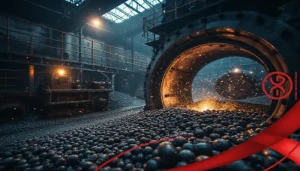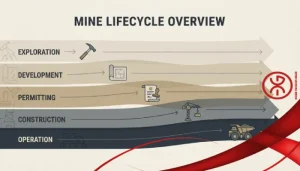Lead ball mills are specialized grinding machines that use lead balls as grinding media to process materials, particularly in applications like black powder production, pyrotechnics, and certain chemical processes. The unique properties of lead, such as its high density and softness, make these mills suitable for specific grinding tasks where contamination control and material properties are critical. This guide explores what lead ball mills are, how they work, their applications, benefits, and practical strategies for optimizing their performance while addressing safety and environmental considerations.
What Is a Lead Ball Mill?
A lead ball mill is a cylindrical grinding device that uses lead balls as the primary grinding media to pulverize and mix materials. These mills are typically used in applications requiring soft, dense media to achieve specific grinding characteristics, such as in pyrotechnics or small-scale chemical processing. Lead balls are chosen for their high density (11.34 g/cm³), which provides strong impact forces, and their softness, which minimizes wear on the mill’s interior.
Key Components of a Lead Ball Mill
- Rotating Drum: A small to medium-sized cylindrical chamber (1–100 liters), often lined with rubber or plastic to prevent contamination and resist corrosion.
- Grinding Media: Lead balls (10–50 mm) that crush and grind materials through impact and attrition.
- Drive System: A motor that rotates the drum at 20–60 RPM, optimized for small-scale or specialized applications.
- Discharge System: Ports or screens that allow processed material to exit, typically in batch mode.
- Safety Features: Enclosed designs and ventilation systems to minimize lead dust exposure, critical due to lead’s toxicity
Types of Lead Ball Mills
Batch Lead Ball Mills: Process small batches, ideal for pyrotechnics or laboratory applications.
Planetary Lead Ball Mills: Use high-energy planetary motion for finer grinding in research settings.
Custom Lead Ball Mills: Designed for niche applications, such as black powder production, with specialized liners and safety controls.
Optimizing Ball Mill Media Selection
- Batch Lead Ball Mills: Process small batches, ideal for pyrotechnics or laboratory applications.
Planetary Lead Ball Mills: Use high-energy - planetary motion for finer grinding in research settings.
- Custom Lead Ball Mills: Designed for niche applications, such as black powder production, with specialized liners and safety controls.
Lead ball mills are primarily used in applications where lead’s unique properties are advantageous, but they require careful handling due to health and environmental concerns.
How Lead Ball Mills Work
- Lead ball mills operate by rotating a drum filled with lead balls and the material to be processed. The rotation causes the lead balls to tumble, creating impact and attrition forces that grind and mix the material.
- Impact Grinding: The heavy lead balls collide with the material, breaking it into smaller particles.
- Attrition Grinding: Friction between lead balls and the material further reduces particle size through abrasion.
- Rotation Speed: Operates at 60–80% of critical speed (Nc = 42.3/√D, where D is the drum diameter in meters), typically 30–50 RPM for small drums.
- Wet or Dry Operation: Most lead ball mills operate dry to avoid lead contamination in liquids, though wet grinding is used in specific chemical applications.
- Safety Considerations: Enclosed systems and dust control are essential to prevent lead exposure.
For example, in black powder production, a lead ball mill might rotate at 40 RPM, using 20 mm lead balls to grind a 5 kg batch of charcoal, sulfur, and potassium nitrate into a fine, uniform powder.
Applications of Lead Ball Mills
Lead ball mills are used in specialized industries where lead’s properties are beneficial. Key applications include:
1. Pyrotechnics and Black Powder Production
Black Powder: Grinds and mixes charcoal, sulfur, and potassium nitrate into a fine, homogeneous powder for fireworks or ammunition.
Example: A batch lead ball mill processes 10 kg of black powder, achieving particle sizes of 10–50 micrometers for optimal burn rates.
2. Chemical Process
Pigment and Compound Mixing: Grinds and blends chemical compounds where lead’s softness prevents excessive wear or contamination.
Example: A lead ball mill mixes 2 kg of specialty pigments for niche chemical applications.
3. Laboratory Research
Material Testing: Used in labs to study grinding properties of materials with soft, dense media.
Example: A planetary lead ball mill grinds 100 g of experimental compounds to 5–20 micrometers for research purposes.
4. Small-Scale Industrial Applications
Niche Powders: Produces fine powders for small-scale applications like battery manufacturing or specialty alloys.
Example: A lead ball mill processes 50 kg of lead-based compounds for battery paste production.
Lead ball mills are niche tools, primarily used where lead’s unique properties outweigh safety concerns, provided strict safety protocols are followed.
Benefits of Lead Ball Mills
Lead ball mills offer specific advantages for certain applications:
High Density: Lead’s density (11.34 g/cm³) provides strong impact forces, enabling efficient grinding of soft to medium-hard materials.
Softness: Lead balls minimize wear on mill liners, reducing maintenance costs in non-abrasive applications.
Uniform Mixing: Produces homogeneous mixtures, critical for pyrotechnics and chemical blending.
Cost-Effectiveness: Lead balls are relatively inexpensive compared to ceramic or zirconia media.
Specialized Applications: Ideal for processes like black powder production where lead’s properties enhance performance.
However, lead’s toxicity requires strict safety measures, limiting its use to controlled environments.
Optimizing Lead Ball Mill Performance
To maximize the efficiency and safety of your lead ball mill, consider these detailed strategies:
1. Select the Right Lead Balls
Purity: Use high-purity lead balls (99.9% lead) to minimize impurities in sensitive applications like pyrotechnics.
Size: Smaller balls (10–20 mm) for fine grinding, larger balls (30–50 mm) for coarser grinding.
Example: For black powder, 15 mm lead balls provide optimal grinding and mixing efficiency.
2. Control Rotation Speed
Optimal Range: Operate at 60–80% of critical speed (e.g., 30–50 RPM for a 0.5-meter drum) to ensure effective tumbling.
Monitoring: Use programmable controls to adjust speed based on material properties.
Example: For pyrotechnic powders, 40 RPM balances grinding efficiency and safety.
3. Manage Batch Size
Optimal Fill: Fill the drum to 40–50% of its volume (including lead balls and material) to optimize tumbling action.
Example: In a 10-liter mill, a 4-liter mix (2 kg material + 2 kg lead balls) ensures efficient grinding.
Batch Consistency: Process consistent batch sizes to maintain uniform results.
4. Ensure Safety and Dust Control
Enclosed Systems: Use sealed drums and ventilation systems to minimize lead dust exposure.
Personal Protective Equipment (PPE): Require gloves, masks, and protective clothing for operators.
Example: A dust collection system reduces lead particle exposure during black powder grinding.
5. Maintain Liners and Media
Liner Material: Use rubber or plastic liners to prevent lead contamination and resist wear.
Inspection: Check liners every 500–1,000 hours and replace worn sections.
Media Replacement: Replenish lead balls every 300–500 hours, as lead’s softness leads to faster wear.
Example: Rubber liners last 1–2 years in pyrotechnic grinding, while lead balls may need replacement every 400 hours.
6. Monitor Grinding Time
Duration: Adjust grinding time (e.g., 1–4 hours) based on material hardness and desired particle size.
Example: Grinding 5 kg of black powder for 2 hours with 20 mm lead balls achieves a fineness of 10–50 micrometers.
Challenges and Solutions in Lead Ball Mill Operations
Lead ball mills face unique challenges due to lead’s properties and toxicity. Here are common issues and solutions:
Lead Toxicity: Exposure to lead dust or particles poses health risks. Solution: Use enclosed mills, dust collection systems, and PPE to minimize exposure.
Media Wear: Lead’s softness causes rapid ball wear. Solution: Use high-purity lead balls and replenish regularly.
Contamination: Lead particles can contaminate sensitive materials. Solution: Use lead ball mills only for applications where lead is acceptable (e.g., black powder).
Inconsistent Particle Size: Caused by improper ball size or speed. Solution: Use a mix of ball sizes (e.g., 10–30 mm) and optimize rotation speed.
Strict safety protocols and maintenance are essential for safe and effective operation.
Choosing the Right Lead Ball Mill for Your Needs
Selecting the appropriate lead ball mill depends on your application:
Mill Type: Batch mills for pyrotechnics or small-scale production, planetary mills for ultra-fine research grinding.
Drum Size: Choose 1–10 liters for labs or 20–100 liters for small-scale production.
Media Type: High-purity lead balls for pyrotechnics or chemical applications, avoiding contamination-sensitive processes.
Safety Features: Ensure enclosed designs, dust control, and corrosion-resistant liners (e.g., rubber).
Alpha Grinding Media offers high-quality grinding media alternatives, such as ceramic or steel balls, for applications where lead’s toxicity is a concern.
Environmental and Safety Considerations
Lead’s toxicity requires strict safety and environmental measures:
Operator Safety: Use PPE (masks, gloves, coveralls) and ensure proper ventilation to prevent lead dust inhalation.
Waste Management: Dispose of worn lead balls and contaminated materials according to local regulations (e.g., hazardous waste protocols).
Alternative Media: Consider ceramic or steel balls for applications where lead contamination is unacceptable.
Regulatory Compliance: Adhere to occupational health standards (e.g., OSHA or EU regulations) for lead handling.
Conclusion
Lead ball mills are specialized tools for grinding and mixing in applications like black powder production, pyrotechnics, and certain chemical processes, leveraging lead’s high density and softness for efficient performance. While effective for specific uses, they require careful handling due to lead’s toxicity. By selecting high-purity lead balls, optimizing rotation speed, managing batch sizes, and implementing strict safety measures, you can maximize the efficiency and safety of your lead ball mill. Understanding the applications, benefits, and challenges of lead ball mills empowers you to achieve high-quality results in niche grinding processes while prioritizing operator safety and environmental responsibility.
Frequently Asked Questions (FAQs)
1. What is the main advantage of using lead balls in a ball mill?
Lead balls offer high density for strong impact forces and softness to minimize liner wear, making them ideal for applications like black powder production where fine, uniform grinding is needed.
2. What materials can a lead ball mill process?
Lead ball mills are primarily used for pyrotechnic materials (e.g., black powder), specialty chemicals, and niche powders. They are unsuitable for applications where lead contamination is a concern, such as food or pharmaceuticals.
3. How can I ensure safety when using a lead ball mill?
Use enclosed mills with dust collection systems, require PPE (masks, gloves), ensure proper ventilation, and follow hazardous waste regulations for disposing of worn lead balls.
4. How often should I replace lead balls in a lead ball mill?
Replace lead balls every 300–500 hours, depending on material abrasiveness. Lead’s softness causes faster wear, so regular monitoring and replenishment are essential for consistent performance.





